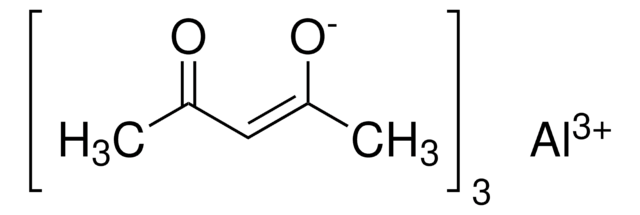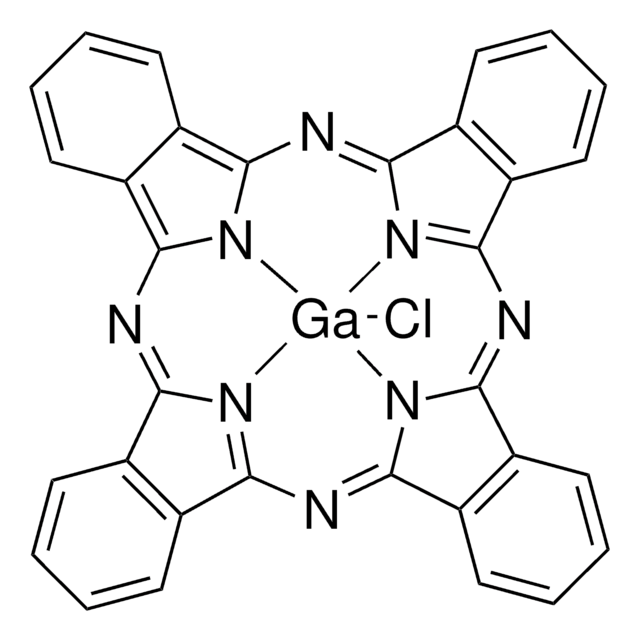393541
Gallium(III) acetylacetonate
99.99% trace metals basis
Synonyme(s) :
Ga(acac)3, Gallium(III) 2,4-pentanedionate
About This Item
Produits recommandés
Niveau de qualité
Pureté
99.99% trace metals basis
Forme
solid
Pertinence de la réaction
core: gallium
reagent type: catalyst
Pf
196-198 °C (dec.) (lit.)
Chaîne SMILES
CC(=O)\C=C(\C)O[Ga](O\C(C)=C/C(C)=O)O\C(C)=C/C(C)=O
InChI
1S/3C5H8O2.Ga/c3*1-4(6)3-5(2)7;/h3*3,6H,1-2H3;/q;;;+3/p-3/b3*4-3-;
Clé InChI
ZVYYAYJIGYODSD-LNTINUHCSA-K
Description générale
Application
- As a precursor to synthesize nanocrystalline gallium oxide spinels via solvothermal process for various applications like photocatalysis, battery cathode materials and electrocatalysis.
- To fabricate LiGa alloy layer on Li metal anode from in-situ electroreduction. It suppresses the anode dendrite formation in lithium-sulfur batteries.
- To prepare highly efficient gallium-platinum (GaPt3) nanoparticles hot-solvent synthesis which act as electrocatalysts for hydrogen evolution reaction.
- To synthesize γ-Ga2O3 nanocrystals for fabricating electron-transporting layer for perovskite solar cells. It forms effective interfacial connections with the perovskite top layer, enhancing the efficiency of charge transport.
Mention d'avertissement
Warning
Mentions de danger
Classification des risques
Acute Tox. 4 Dermal - Acute Tox. 4 Inhalation - Acute Tox. 4 Oral - Carc. 2 - Eye Irrit. 2 - Skin Irrit. 2 - STOT SE 3
Organes cibles
Respiratory system
Code de la classe de stockage
11 - Combustible Solids
Classe de danger pour l'eau (WGK)
WGK 3
Point d'éclair (°F)
Not applicable
Point d'éclair (°C)
Not applicable
Équipement de protection individuelle
dust mask type N95 (US), Eyeshields, Gloves
Faites votre choix parmi les versions les plus récentes :
Déjà en possession de ce produit ?
Retrouvez la documentation relative aux produits que vous avez récemment achetés dans la Bibliothèque de documents.
Les clients ont également consulté
Articles
Since the demonstration of the first practical solar cell 60 years ago, research on novel materials, improved solar cell design and structure, and innovative manufacturing processes have all contributed to a continuous increase in the efficiency of photovoltaic (PV) devices.
Nanomaterials are considered a route to the innovations required for large-scale implementation of renewable energy technologies in society to make our life sustainable.
Notre équipe de scientifiques dispose d'une expérience dans tous les secteurs de la recherche, notamment en sciences de la vie, science des matériaux, synthèse chimique, chromatographie, analyse et dans de nombreux autres domaines..
Contacter notre Service technique












